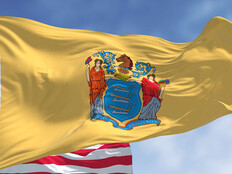Little Cities See Big Benefits in Smart City Investment
Big cities like Charlotte, N.C., and Chicago are working toward large-scale and high-profile smart city initiatives, but smaller, less populated cities implementing the new technology may be seeing more benefits.
“Smaller cities tend to focus on smart city projects that deliver a clear, tangible return on investment, such as smart street lighting or resource management, rather than more experimental projects,” finds a recent survey by the U.S. Conference of Mayors and analytics firm IHS Markit.
Small Populations Could Mean Greater Returns on Investment
The survey defines a “small city” as one that has less than 150,000 residents, and nearly 30 percent of existing smart city projects have taken place in these small cities, the survey finds. Similarly, of all planned smart city projects, 28 percent will take place in small cities.
Despite their lower populations, these cities are implementing information and communications technology (ICT) systems to improve efficiency, manage complexity, and enhance quality of life for their citizens.
The new technology can be easier to implement on a smaller scale, the survey reports. And by becoming test beds for the new technology, these cities are more likely to spark economic growth and attract investment. The resulting benefits could make these small cities even more likely to implement smart city projects than their larger counterparts, although they may need a bit of help obtaining funding to get the projects off the ground.
“It may be the case that smaller cities need to collaborate with neighboring cities in the same county to share resources and investment costs,” the survey finds.
Schenectady, N.Y.: A Smarter Downtown
With a population of just 66,000, Schenectady, N.Y., recently worked with Cisco Systems on a plan that aims to integrate a combination of Smart LED technology and Wi-Fi network throughout the city’s downtown area to “reduce expenses, conserve natural resources, foster business, and empower government employees and residents,” states a recent Cisco Customer Spotlight.
In launching its smart city project, Schenectady upgraded more than 5,000 of its existing streetlights to sustainable LED lights, making the entire network accessible through a secure web browser.
Moreover, the city is connecting and augmenting its existing network of video surveillance cameras across the city, “to assist the local police department and provide officers with a better means of instant face-to-face communication.” Residents can also access the video feeds from their smartphones or home computers.
City officials are now able to better access information regarding city conditions, such as pavement or traffic overflow status, through environmental sensors deployed throughout the city.
Ketchum, Idaho: A Teeny, Tiny Smart City
Just 2,728 people live in Ketchum, Idaho, with another 2,700 people commuting in from the surrounding area for work, the survey reports. Despite being a very small city, Ketchum has implemented and planned several smart city projects.
The city has rolled out its Walkable Ketchum Project, which aims to make it easier for pedestrians to walk within the city limits by improving signage, infrastructure and public policies. In addition, Ketchum installed directional and locational signage for pedestrians as well as nine solar streetlights in its downtown area.
“These new street lights will not only improve pedestrian safety, but because they are equipped with sensors and are able to dim automatically, in addition to being solar-powered, they will help the city to reduce energy costs and energy consumption,” the survey notes.
Looking ahead, Ketchum is planning another smart city initiative that will conserve the town’s groundwater by an estimated 1 million gallons per year, reducing water use 20 to 60 percent through smart irrigation systems. Partially funded through a grant, the city will replace its current irrigation systems with “weather- and soil-activated sensing equipment that can be managed and monitored remotely.”
These two projects have been carefully planned and budgeted, and are primed to offer the town and its residents immediate and lasting benefits, showcasing a common trend in small, smart city development.









